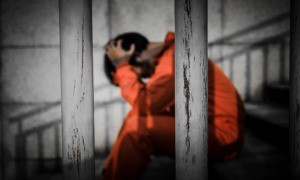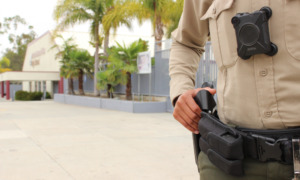***The Office of Justice Programs started to release announcements of its grants this week, and will continue to announce more until Oct. 1. We’ll write an update next week as additional winners are revealed, but here’s a breakdown of the juvenile-related grants coming out of Justice so far:
Mentoring
So, so many mentoring grants. It’s hard to believe that just a few years ago, mentoring was a $10 million carve-out of the juvenile justice budget. We’re sure this is successful in preventing juvenile crime, right?
–We mentioned the national mentoring grants yesterday: $40 million for BGCA, $10 million for Big Brothers Big Sisters of America, $5 million each for National Police Athletic League and National 4-H Council. Click here for that coverage.
-The other big pot was the Multi-State Mentoring Initiative. It’s unclear whether more of these might be announced, but the winners thus far all received $2.4 million: Center for Neighborhood Enterprise (D.C.), Friends First (Colorado), National Organization of Concerned Black Men (D.C.), Nueva Esperanza (Pennsylvania) and U.S. Dream Academy (Maryland).
Each of those grantees is tasked with establishing mentoring programs in five states, and none of them received mentoring grants last year. The Center for Neighborhood Enterprise, founded by Bob Woodson in 1981, is probably best known for its Violence-Free Zones Initiatives in Baltimore, Chicago, Dallas, Milwaukee and Richmond, Va. This award will be completely directed at those five sites.
U.S. Dream Academy got federal earmarks from the Department of Education in the mid-2000s, and Nueva Esperanza routinely landed small earmarks for abstinence education through Sen. Arlen Specter (D-Pa., although those were made during his “R-Pa.” days).
-Nine organizations got Second Chance Act grants through the Office of Juvenile Justice and Delinquency Prevention (OJJDP) to do mentoring with juvenile offenders. All of the grants are between $350,000 and $620,000, and are spread out to groups from different parts of the country.
The Bureau of Justice Assistance is the main dispenser of Second Chance funding, and a number of its streams are also targeted at juveniles. It gave out 40 mentoring grants to nonprofits, and a number of them will work with juvenile offenders, particularly those incarcerated in adult facilities.
-Three other grant announcements for mentoring programs: $4 million for tribal youth (split by BGCA and Big Brothers Big Sisters of America), Safe Schools Healthy Students (six grants totaling $1.8 million) and Strategic Enhancement for Mentoring Programs (13 grants totaling $5.6 million.).
A few senators are concerned about the spending practices of BGCA’s national office, but these awards would suggest that OJJDP and its peer reviewers are not. BGCA and its regional affiliates cleaned up on OJJDP grants, as did Big Brothers Big Sisters of America.
Direct Service
Demonstration Grants: As usual, earmarks ate up most of the discretionary money afforded to the OJJDP. But the office managed to make 18 demonstration grants for nearly $8 million, about the same as last year, which is nothing to sneeze at.
The Demonstrations Grant solicitation was never publicly issued. These are not grantees which competed directly against each other; the agency accepted proposals only from “agencies and organizations that have received an invitation to apply under this program.”
-The $150,000 grants to the Center for Children’s Law and Policy and to the W. Haywood Burns Institute are the easiest to explain.
OJJDP has an agreement to match some funding from the Annie E. Casey Foundation to start eight new Juvenile Detention Alternatives Initiative sites (four this year, four next), so these two organizations get grants for training and technical assistance on that project. Casey will put up $250,000 and OJJDP will commit $500,000 for 2010, which includes these two grants.
This is a big deal, because it is the first formal collaboration between Justice and Casey, a foundation which some major players in the field believe has become more plugged into the JJ field than OJJDP itself.
-The National Academy of Sciences grant ($1 million) is probably to continue the 18-month study group that is assessing the Juvenile Justice and Delinquency Prevention Act of 1974, which, as you might have heard, is up for reauthorization.
-Regents of the University of Colorado gets money ($300,000) for Blueprints for Violence Prevention, a project of the Center for the Study and Prevention of Violence.
-Georgetown University got $125,000, which is likely for the Center for Juvenile Justice Reform run by former OJJDP Administrator Shay Bilchik.
Violence Prevention: Four grants for a total of $8.6 million under Community-Based Violence Prevention Demonstration, which could be the precursor to the grand-scale vision of the PROMISE Act. There were another seven grants totaling $2.1 million under the Youth Gang Prevention and Intervention Program, and nine grants for a total of $2.2 million went to Safe Start projects, which will focus on reducing children’s exposure to violent acts.
All four Community-Based grants went for projects in cities: Oakland, Denver, Washington and New York City. Regional Boys & Girls Clubs sites (Central Arkansas, Sacramento and Philadelphia) took three of seven gang prevention grants.
Juvenile Offenders: Seems like a lot more of the Second Chance Act pie was directed toward juvenile offenders this year. OJJDP announced 12 grants totaling $6.5 million for Reentry Demonstration Projects
–As mentioned, the Bureau of Justice Assistance (BJA) runs point on Second Chance Act, and funds a number of youth-related programs with its resources under the act. The Ohio Department of Youth Services gets the sole grant ($538,000) for Targeting Offenders with Co-Occurring Substance Abuse and Mental Health Disorders. Two municipalities– Cook County, Ill. ($574,000) and Orange County, Fla. ($595,000) – got grants to do the same work on a local level. There are a few more BJA juvenile pots that have yet to be announced.
Family Drug Court Projects: Three grants totaling $1 million for courts in the County of Siskiyou, Calif. (great name), Harris County, Texas (Houston) and Jackson County, Mo. It will be interesting to see if there is more investment in this down the line, because the early release of information from the Pathways to Desistance suggests that family-involved substance-abuse intervention is one of the few things that shows strong results in preventing recidivism.
Right now, this is trending the other way. In 2009, OJJDP put out 15 family drug court grants for $7.1 million.
Sex Offenders: The Children’s Institute in Los Angeles gets the $400,000 grant to establish a Sexual Behaviors Problems Program. The institute primarily provides sex abuse treatment to youths who are victims of abuse, but has kept a small program going for years that works with offenders, their victims and parents with a combination of group and individual therapy. Many of the youth in the program acted out sexually in their foster homes or with their siblings.
Senior Vice President of Programs Stephen Ambrose said this grant will significantly expand the project, which he expects will continue as an evening program.
Research and Evaluation
Mentoring: Three grantees will do work under the Mentoring Research Best Practices solicitation. They are Curators of the University of Missouri on Behalf of UMSL ($716,000), The Board of Trustees of the University of Illinois ($1 million) and the Alexandria, Va.-based National Mentoring Partnership ($1 million).
National Mentoring Partnership said in an e-mail to its listserv that Mitchell Miller from the Criminal Justice Department at the University of Texas-San Antonio will lead a research project to examine “the mentoring referral stage in six different juvenile justice
settings in order to improve the design and delivery of evidence-based
mentoring services to high-risk youth.”
bout this time last year, the partnership was in financial disarray and its new executive director had walked after just a few months on the job. So it would seem the ship has been righted a bit. Global Youth Justice is a partner on this project, and the American Youth Policy Forum agreed to hold a session to discuss the findings and help disseminate the results.
An organization called “Grant Fundamentals, LLC” won the $2 million Group Mentoring Research and Evaluation Program grant. If you have not heard of the group, don’t feel bad: It was incorporated only in November 2009, and has no website.
The statutory agent on its business findings – Toledo, Ohio, attorney Thomas Heintschel – told JJ Today, “I just formed it” and referred us to a Gale Mentzer. Mentzer is a program evaluation and research consultant with the University of Toledo Department of Curriculum and Instruction.
Juvenile Offenders: Westat gets the $500,000 grant from the Bureau of Justice Statistics to study juveniles in adult criminal court. Our guess is that there will be a lot of juvenile advocates eager to provide input on what this study should look at.
-The National Opinion Research Center at the University of Chicago will get the $350,000 to conduct “Recidivism in the National Longitudinal Survey of Youth 1997,” a project that the Bureau of Justice Statistics expects will produce “a public access database that can service a range of recidivism studies and publications that delve into the various correlates of recidivism.”
-The National Juvenile Defender Center, headed by Patti Puritz, will use a $500,000 grant to establish the Juvenile Indigent Defense National Clearinghouse. This is the biggest no-brainer among the grant winners, since the center already serves as the coordinator of the Juvenile Indigent Defense Action Network for the John D. and Catherine T. MacArthur Foundation’s Models for Change Initiative.
The indigent defense issue is important to Justice Department leadership, but it does not have a lot of dollars behind it at the moment. Using the $500,000 to fund a group that can combine that money with support from a major foundation-led initiative is a good value investment.
–Justice Research and Statistics Association will get $393,000 to establish the National Juvenile Justice Evaluation Center, which OJJDP hopes will “advance the capacity of states, tribes, and communities to develop and implement policies, procedures, and practices that support their ability to evaluate their activities and use the findings to enhance their juvenile justice activities and programs.”
Violence Prevention: Two grants were made thus far. Rand Corp. gets $765,000 to conduct the evaluation of grantees doing Safe Start Promising Approaches projects, and the University of New Hampshire lands $790,000 for the National Survey on Children Exposed to Violence.
Tribal Youth: Strangely, a municipal government agency, McKinley County, N.M., got the $500,000 grant to do Tribal Youth Field Initiated Research and Evaluation Programs. Last year, the grant went to the University of Montana.
Missing/Runaway: Social science research group The Rockville Institute gets the $1 million award to do National Incidence Studies of Missing, Abducted, Runaway and Thrownaway Children (NISMART). This is the third iteration of this study; NISMART-2 covered 1997 through 1999.
Training/Technical Assistance
Tribal Youth: The Education Development Center in Boston will continue on this project at $2.4 million for this year. The center also pulled in three grants totaling about $1.4 from the Demonstrations Grants program. It is unclear if any or all are related to Tribal Youth though.
Conferences on Juvenile Justice: $30,000 goes to the National Association of Drug Court Professionals in Alexandria, Va., for its 17th Annual Drug Court Training Conference, which will be held July 17-20 in Washington. Another $25,000 goes to Rady Children’s Hospital in San Diego. Rady’s press office couldn’t immediately track down the purpose of the conference, but the hospital’s Center for Healthier Communities operates a wellness team focused on positive youth development at the city’s juvenile hall.





























